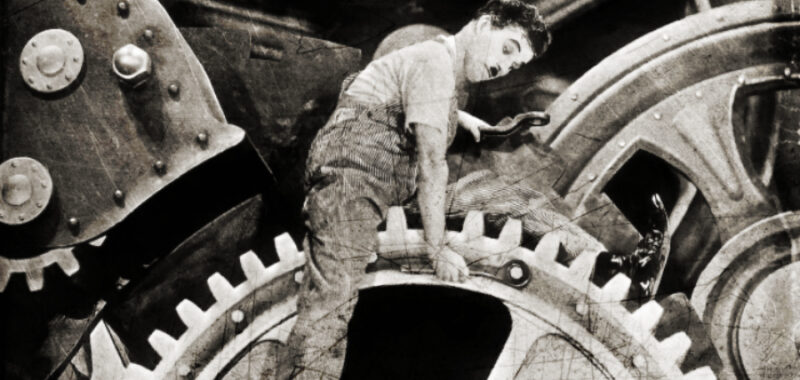Artists matter more than any producing organization.

In recent articles, as we’ve discussed the ways in which nonprofit arts organizations have, in the main, chosen to be irrelevant to their charter, their communities, and their owners (the states in which they incorporated), several performing artists have written in with some terror in their subtext, that pointing out their inadequacies may force them to close down. This, in turn, would deprive them of scarce jobs in the arts industry — nonprofit or commercial. Therefore, in a bizarre commutative property of arts-cum-math theory, somehow the idea of not supporting all nonprofit arts organizations, no matter how egregious their activity is, equates to not supporting artists.
No. Wrong. Let’s unravel that one right now.
First of all, artists who work in performing arts organizations work at the pleasure of the producer, not the other way around. They need artists to fulfill the requirements of the play, symphony, opera, or ballet. Like any employer in American history, they want to find the best workers at the lowest price. After all, you never read of a union negotiation with Actors Equity Association where the producers are arguing for more money for actors, child care, healthcare with no minimum week requirement, or higher maternal leave than the government allows. No, the negotiation is to find a common point, the cheapest the producers can get.
When actors and writers go on strike, as they did a couple of years ago, the producers and studios tried to find any way they could to eliminate jobs, utilizing AI to replace artists and finding ways to skirt around paying residuals for work that is streamed rather than shown on a television box or on a movie screen. That’s how much they “support” artists.

A whole bunch of decades ago, I acted in a production of Godspell in Hollywood. The show sold out just about every night. It was in a church basement theater with fewer than 99 seats, so there was no pay at all for the run, simply exposure for young actors and singers in Hollywood. In fact, some amazing people were in that production, many who are artistic giants in their respective fields right now. Godspell ran for months and months and months, and at the end of the run, the producers, looking as angelic and as grateful as the apostles themselves, handed each of us an envelope. Inside the envelope was a note that read thank you, along with a $20 bill.

If I weren’t flat broke, I would have thrown it back at them or given it to one of the homeless people who hung out in the parking lot.
Happily (?), the 99-seat rule has changed a bit, but too many actors still believe they receive all they need in exposure. Producers stoke that weird little fire on a regular basis because “exposure” costs nothing at all.
So, when you support a nonprofit arts organization, it doesn’t mean that you’re supporting artists. They only employ them. Cheaply.
As to whether I support artists, I do. I think artists are magicians in that they can bring disparate pieces of matter or concepts together in order to create a new piece of art. That art, then, has its own value. Whether those artists are writers, performers, composers, musicians, sculptors, or painters (or any combination thereof), they have the ability to mold anything into art. “Look I made a hat/Where there never was a hat” was Stephen Sondheim’s brilliantly taut description of the magic of artists in Sunday in the Park with George.
The difference between artists and arts organizations, as discussed in the books Scene Change and Scene Change 2, is that artists make magic and arts organizations make money. Nonprofit arts organizations, which are supposed to be different in nature than commercial art (but, so often, choose to believe that the presentation of art is somehow a charitable activity – it is not), have made the error in judgment to produce as their commercial counterparts would.
They measure their success not by how much better the community is — in either social service, community activism, social justice initiatives, or just helping out poor people — but by reviews from the press, ticket sales, and all the wealthy donors’ names on the walls. Vainglory doesn’t come close to describing the idea that an “artistic vision” somehow is a charitable goal, but pulling people out of despair is not. And, as we’ve stated on numerous occasions, that’s why the money is drying up.
To nonprofit arts organization leaders: stop blaming the pandemic. Stop blaming the audiences. Stop blaming everyone else. Look straight in the mirror, even if you inherited the dysfunction.

Instead, artists: try to understand that you are more important to your community than the organization that may or may not hire you for a job. You have more leverage than you think. When other companies have chosen the path of community-centrism, they have provided more artists jobs than ever. Nonprofit arts organizations that do work that improves the community generally are happier and more fulfilling places to work than a simple gig could offer. And the need is constant for creative ways to solve your community’s biggest problems.
To put it another way: if all the nonprofit arts organizations were to close in your community, who would suffer? In the short term, a lot of people, including artists. In the long term, artists would find ways to team up, collaborate, and use their skill sets to create art in response to the community, not in spite of it.
If all the artists in a community were to suddenly leave, who would suffer? Everyone. There is no community without creativity. There is no business without creativity. And, of course, there is no art without creativity. Take advantage of that. As an artist, you deserve to be heard.


Related

